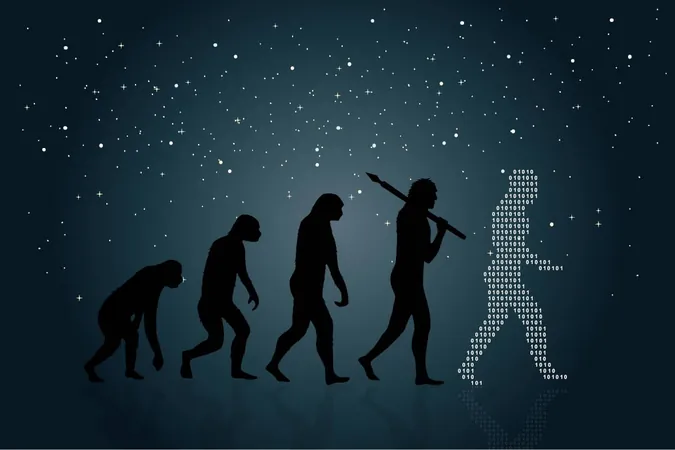
Groundbreaking Study Reveals the Truth About Evolutionary Rates!
2024-10-06
The Theory of Evolution, its foundation placed by Darwin, has long been a subject of debate among scientists, particularly regarding the rates at which species evolve. For years, researchers argued that younger species groups seem to evolve more rapidly than their older counterparts. This perception has given rise to a myriad of hypotheses attempting to explain this phenomenon. However, a recent study published in PLOS Computational Biology is shaking up these long-held beliefs, suggesting that what scientists interpreted as rapid evolution might actually be a case of statistical 'noise'.
The Acceleration of Evolution: Challenging Assumptions
Evolutionary biologists have pointed out a fascinating trend: younger clades—or groups of species that share a recent common ancestor—appear to undergo significant evolutionary changes in a shorter timeframe compared to older species. This has prompted theories suggesting factors such as new environments fostering rapid diversification or catastrophic events accelerating both extinction and speciation rates. Yet this new study, penned by researchers Brian C. O'Meara from the University of Tennessee and Jeremy M. Beaulieu from the University of Arkansas, provides a vital correction. Their paper, aptly titled “Noise Leads to the Perceived Increase in Evolutionary Rates Over Short Time Scales,” proposes that the perceived acceleration in evolutionary processes is largely a misinterpretation clouded by statistical inaccuracies.
What Is Statistical Noise?
In layman’s terms, statistical noise refers to random errors or fluctuations in data that can obscure true patterns. O'Meara and Beaulieu's research suggests that the apparent increase in evolutionary rates associated with younger species is actually a distortion caused by these statistical artifacts rather than an indication of fundamental biological changes. The implications of this finding are profound. It calls into question existing models that differentiate between short and long-term evolutionary processes, suggesting that they may not be as divergent as previously assumed.
Rethinking Evolutionary Models
This study not only critiques the current understanding of evolutionary dynamics but also emphasizes the importance of meticulous statistical analysis in biological research. By correcting for statistical noise, researchers can paint a more accurate picture of evolution that doesn't necessitate the complexity of varying mechanisms across different time scales. O'Meara and Beaulieu assert, “Our findings suggest that smaller, younger clades appear to evolve faster not due to intrinsic properties but because of statistical noise.” This statement challenges many biological hypotheses that have emerged around the perception of accelerated evolution.
The Future of Evolutionary Biology
The ramifications of this research are significant. For scientists who have built entire frameworks around accelerated evolutionary rates, this revelation may cause discontent. However, it simultaneously opens new avenues for exploration, encouraging scientists to reevaluate long-standing assumptions and refine their models for studying evolution. As the authors themselves suggested, the notion that a highly intriguing pattern was merely an artifact of statistical analysis is indeed frustrating but vital for scientific integrity. It pushes the boundaries of evolutionary biology and invites a reexamination of how we interpret biodiversity and evolutionary rates.
Conclusion
In an era where science continually morphs with new discoveries and insights, the work by O'Meara and Beaulieu is a reminder of the necessity to question established norms and utilize updated analytical methods. As we strive for a deeper understanding of evolution, let’s keep in mind that often, the simplest explanation may just be hidden behind the 'noise' of complex data. This research not only reshapes our understanding of evolutionary processes but also empowers the scientific community to adopt a more rigorous approach to data interpretation, ultimately bringing us closer to untangling the intricate web of life on Earth.









 Brasil (PT)
Brasil (PT)
 Canada (EN)
Canada (EN)
 Chile (ES)
Chile (ES)
 España (ES)
España (ES)
 France (FR)
France (FR)
 Hong Kong (EN)
Hong Kong (EN)
 Italia (IT)
Italia (IT)
 日本 (JA)
日本 (JA)
 Magyarország (HU)
Magyarország (HU)
 Norge (NO)
Norge (NO)
 Polska (PL)
Polska (PL)
 Schweiz (DE)
Schweiz (DE)
 Singapore (EN)
Singapore (EN)
 Sverige (SV)
Sverige (SV)
 Suomi (FI)
Suomi (FI)
 Türkiye (TR)
Türkiye (TR)